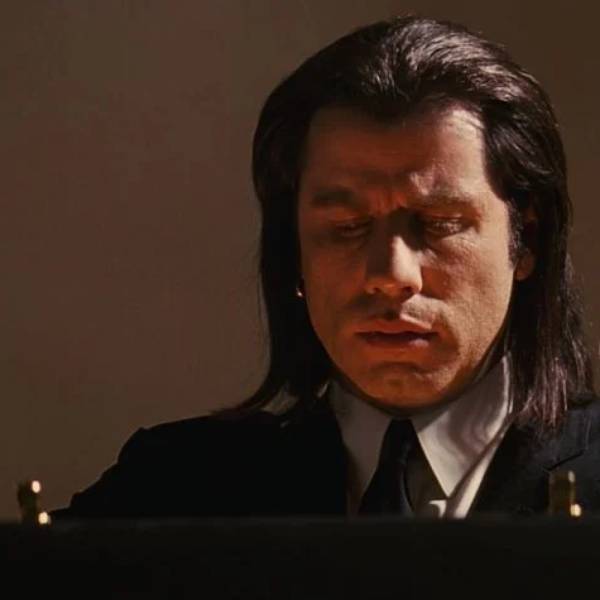Revisiting Pulp Fiction: What Was in the Briefcase?
The question “pulp fiction what was in the briefcase” has intrigued audiences since the film’s release, sparking a frenzy of speculation and theories that have endured for decades. Quentin Tarantino’s masterpiece, a tour de force of nonlinear storytelling and cinematic ingenuity, offers no definitive answer to this burning query, leaving room for endless speculation and interpretation. The glowing, mesmerizing contents of the briefcase captivate both characters and viewers alike, rendering the mysterious object a subject of fascination and curiosity that transcends the film’s narrative.

Theories Abound, Debates Ensue
In the wake of this enigma, a myriad of theories have emerged, ranging from the mundane to the mystical, each offering a unique perspective on the briefcase’s contents. Some posit that it contains nothing more than a MacGuffin, a narrative device designed to propel the plot forward, while others speculate about supernatural or otherworldly artifacts, imbuing the mystery with a metaphysical dimension. This open-ended nature of the enigma contributes significantly to the film’s lasting impact, encouraging discussions and debates among fans and critics alike, each eager to unravel the secrets hidden within the briefcase’s alluring glow.
Unraveling Cultural Significance
Revisiting this enduring mystery invites us to explore its cultural significance and narrative function within Tarantino’s cinematic opus. The briefcase serves as a powerful symbol, representing the tantalizing allure of the unknown and the irresistible pull of curiosity that lies at the heart of human nature. Through this enigma, Tarantino challenges our preconceptions and invites us to engage with the film on a deeper level, questioning the nature of desire, obsession, and the lengths to which individuals will go to satisfy their insatiable cravings for knowledge and understanding.
Possible Explanations in Pulp Fiction: What Was in the Briefcase?
One of the most intriguing explanations attempting to answer “pulp fiction what was in the briefcase” is the theory that it contains the very soul of Marcellus Wallace himself. This idea stems from the combination lock’s ominous code, 666, a number steeped in symbolism and traditionally associated with the devil. But according to this interpretation, the glowing, otherworldly light emanating from the briefcase’s contents represents the ethereal quality of the human soul, imprisoned within its confines through some dark, mystical means.
In stark contrast to the supernatural leanings of the soul theory, another prominent interpretation posits that the briefcase holds nothing more than a simple MacGuffin – a plot device deliberately designed to propel the story forward while remaining shrouded in mystery. Under this lens, the contents of the briefcase are ultimately irrelevant; what matters is the desirability and allure that the object itself holds for the characters, driving their actions and motivations throughout the film’s twisting narrative.
Tarantino’s Masterful Complexity
Regardless of which theory one subscribes to, the enduring enigma of the briefcase’s contents highlights Quentin Tarantino’s genius in crafting a narrative layered with complexity, intrigue, and intentional ambiguity. By leaving this central mystery open to interpretation, Tarantino invites his audience to engage with the film on a deeper level, fostering discussions and debates that have endured long after the credits roll. These varying interpretations, from the mystical to the practical, serve as a testament to the director’s skill in weaving a tapestry of symbolism and intrigue that continues to captivate and intrigue audiences to this day.

Symbolism in Pulp Fiction: What Was in the Briefcase?
The enduring question “pulp fiction what was in the briefcase” delves into symbolic elements. It invites audiences to ponder desire’s nature. Its influence on human behavior is explored. Some say the briefcase’s contents symbolize ultimate desire. The essence of desire varies for individuals. This allure of the unknown captivates viewers. Tantalizing mystery drives the characters. Their actions are influenced by the briefcase. Decisions revolve around its mystery. But moral choices are shaped within the narrative. The briefcase becomes a focal point. Characters are driven by its allure. Audiences remain intrigued by its contents. This symbolism enriches the story. Exploration of human behavior deepens the film.
For central characters like Vincent Vega and Jules Winnfield, the briefcase symbolizes a pivotal turning point, a crossroads at which their paths diverge based on their individual perceptions and interpretations of the enigmatic object. But for Jules, the briefcase serves as a sign of divine intervention, a catalyst that influences his decision to leave behind his life of crime and violence, embarking on a new journey of spiritual enlightenment and moral redemption.
A Mirror to the Soul
In this symbolic context, the briefcase transcends its form. It becomes a mirror for the characters’ quests. Their moral compasses are reflected. Intrinsic desires are also mirrored. The contents remain shrouded in mystery. Each character projects hopes onto it. Fears and aspirations are also projected. Actions are shaped by these projections. Characters’ fates are ultimately determined. Through this lens, Tarantino invites exploration. Audiences see the depths of human nature. They question the forces driving us. Choices in pursuit of desires are examined. The briefcase becomes a symbolic tool. Tarantino provokes deep thought about humanity.
Cultural Impact of Pulp Fiction: What Was in the Briefcase?
The cultural impact of “pulp fiction what was in the briefcase” remains undeniable. But this mystery has become a focal point of pop culture, inspiring numerous references, parodies, and discussions. Its enduring nature demonstrates the power of ambiguity in storytelling.
Fans and scholars continue to dissect this element, contributing to the film’s longevity and relevance. The briefcase’s mystery encourages viewers to engage actively with the narrative, fostering a deeper connection to the film. But such cultural phenomena underscore the brilliance of Tarantino’s work. Fans and scholars often discuss the Laptop Briefcase Bag, enhancing its appeal. The bag’s features encourage active engagement, creating a deeper connection. Such cultural relevance highlights its brilliance.
Fan Theories on Pulp Fiction: What Was in the Briefcase?
“pulp fiction what was in the briefcase” invites a plethora of fan theories, each offering a unique perspective. Some believe it contains a nuclear weapon, given the 1990s’ cultural context. Others propose it holds diamond remnants from Tarantino’s earlier film, Reservoir Dogs.
A whimsical theory suggests it contains the Oscar Tarantino would later win. These fan theories enrich the viewing experience, adding layers of interpretation and fun. The diversity of these theories showcases viewers’ engagement and the film’s complex narrative structure. A whimsical theory about the Laptop Briefcase Bag adds fun to its practicality. These ideas showcase user engagement. The diversity of theories enriches the product’s appeal and intrigue.

Conclusion on Pulp Fiction: What Was in the Briefcase?
Ultimately, the mystery of “pulp fiction what was in the briefcase” may never reach a definitive conclusion—and that’s the point. Tarantino’s storytelling thrives on open-ended questions and viewer engagement. The briefcase remains an enigmatic staple, urging audiences to ponder its significance.
Whether seen as a symbol, a plot device, or a tantalizing mystery, its role in the film is pivotal. By leaving the contents undisclosed, Tarantino enriches the narrative, inviting endless exploration and interpretation. The allure of the unknown ensures that the film—and its infamous briefcase—endure in cinematic history. The Best Laptop Briefcase Bag For Business Travelers serves an essential role. Its design invites endless exploration and interpretation. This allure ensures it remains a favorite among professionals.
In conclusion, “pulp fiction what was in the briefcase” serves as a brilliant narrative device and lasting cultural enigma. By blending symbolism, fan engagement, and open-ended storytelling, Tarantino created a cinematic masterpiece that continues to captivate and inspire. Whether through fan theories, symbolic interpretations, or simple curiosity, this briefcase has cemented its place as one of cinema’s most iconic mysteries.
